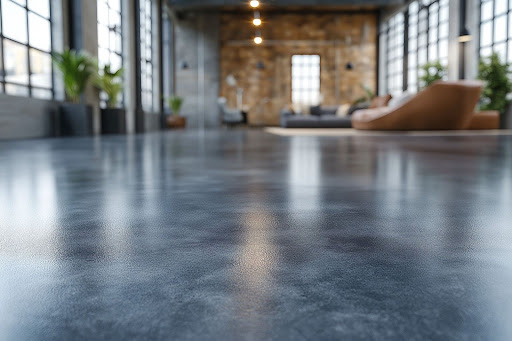Choosing the right flooring for your home is a decision that blends style, budget considerations, and long-term value. Epoxy flooring has emerged as a popular option, especially for homeowners seeking a sleek, durable surface. When deciding between epoxy floors and common household choices like tile, wood, or laminate, you’ll want to weigh factors such as cost, durability, installation time, maintenance demands, and overall aesthetic appeal. By understanding these key areas, you can make a more confident choice about which flooring solution best fits your vision and lifestyle.
Cost Factors to Consider
One of the first things homeowners look at is the price tag. Epoxy flooring typically offers a competitive cost profile. While tile, wood, and laminate costs vary based on materials and quality, epoxy stands out for its combination of longevity and value. The quality and rarity of hardwoods can significantly raise initial installation costs. Laminate and tile can be budget-friendly options, depending on the grade and design. Epoxy frequently falls between these price points when considering its durability and relatively low maintenance expenses over many years.
Investing wisely in flooring can pay off in the long term. Cheap or poorly installed floors often require premature replacement, which adds to overall costs. Epoxy’s smooth surface and protective coating can help homeowners save money on repairs and refinishing down the road. Rather than redoing your floors every decade, focusing on a resilient and cost-effective solution from the start may be the best route to long-term savings.
Durability for the Long Haul
Anyone seeking a floor that looks good under daily wear should pay close attention to durability. Homes that endure heavy foot traffic, frequent spills, or the occasional pet accident can benefit from a seamless epoxy surface. Many epoxy systems are formulated to be resistant to household chemicals and abrasions, making them suitable for kitchens, entryways, and garage floors. Comparatively, wood floors may develop scratches or warp over time if exposed to moisture, while laminate’s protective layer can still chip under repeated impacts.
Durability can be especially important if you live in a climate with fluctuating temperatures or high humidity. Tile is known for its ability to handle moisture; however, individual tiles can crack if subjected to significant force or if the subfloor is uneven. Epoxy, on the other hand, can maintain its structural integrity, provided the installation process follows proper professional guidelines and the underlying concrete slab is in good condition.
Evaluating Installation Time
Installation speed can be essential to those who want to settle into their spaces without extended downtime. Wood flooring sometimes requires acclimatization (letting the planks adjust to the home’s temperature and humidity), while tile usually needs a thorough underlayment and grouting process. Laminate is known for comparatively quicker installations when employing click-and-lock systems, although the subfloor must be perfectly level for best results.
Professionally installed epoxy can be completed in a relatively short time, depending on the project’s size. While curing periods can vary, especially if multiple layers are applied, many homeowners find that getting an epoxy floor in place often takes less time overall when balanced against tasks like sanding and staining hardwood or laying individual tiles. Speedy turnaround is especially relevant if you’re renovating a garage or basement, where minimal disruption is a priority.
Maintenance and Daily Upkeep
When it comes to day-to-day cleaning, epoxy flooring is known for its low upkeep. The seamless structure means there are fewer crevices or seams where dust, dirt, and spills can gather. This is particularly beneficial in busy households where quick mopping or sweeping is part of the regular routine. Tiles, while relatively easy to clean on their surfaces, do have grout lines that may need periodic resealing or scrubbing. Wood floors are susceptible to scratches and can require special products for cleaning to avoid damage. Laminate flooring, though less high-maintenance than hardwood, may not stand up well to prolonged moisture exposure at the seams.
With epoxy, homeowners can enjoy the peace of mind that frequent upkeep tasks won’t be overly cumbersome or expensive. A simple mild detergent and water solution typically suffice for cleaning. Look for epoxies made with protective topcoats—these can enhance the longevity of the surface, keeping your floor’s luster intact for years to come.
Aesthetic Appeal and Personal Expression
Visual appeal is often the deciding factor when homeowners are torn between flooring styles. Epoxy scores high here, thanks to its modern look and the array of customization possibilities. Color flakes, metallic finishes, and various shades can help you fine-tune the ambiance of a room. Tile also comes in numerous patterns and textures, while wood offers timeless warmth with unique grain variations. Laminate provides a budget-friendly way to simulate the look of wood without some of the upkeep requirements.
Epoxy’s glossy finish can create a bright, reflective space that pairs well with contemporary and industrial design schemes. Meanwhile, homeowners looking for softer, more rustic interiors may gravitate toward wood or textured tile. Ultimately, your choice comes down to the way you want your home to look and feel for years to come.
Taking the Next Step
Deciding on the right flooring for your home is a significant milestone in any renovation or construction project. Whether you anticipate heavy foot traffic, hope to minimize maintenance demands, or simply love the cutting-edge look of epoxy, there’s no denying its growing popularity among modern homeowners. For personalized guidance on installations, cost factors, and design possibilities, contact us today to learn more about scheduling a consultation or to receive an estimate tailored to your home’s unique requirements. Let us guide you toward a flooring solution that balances style, practicality, and lasting value for your home.


